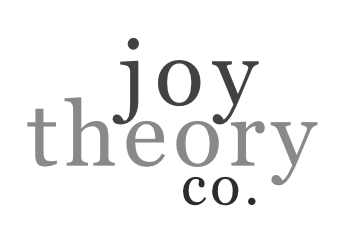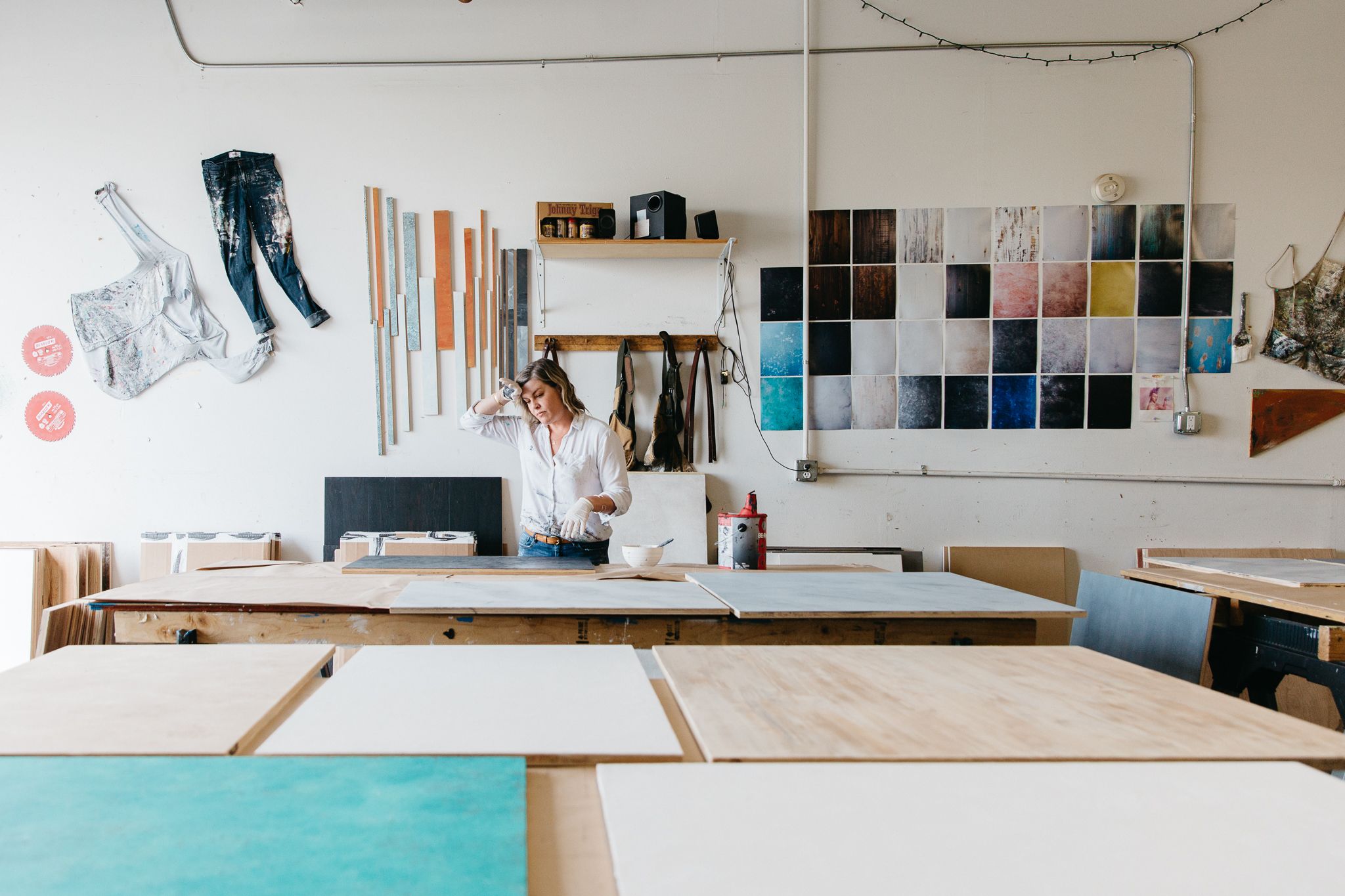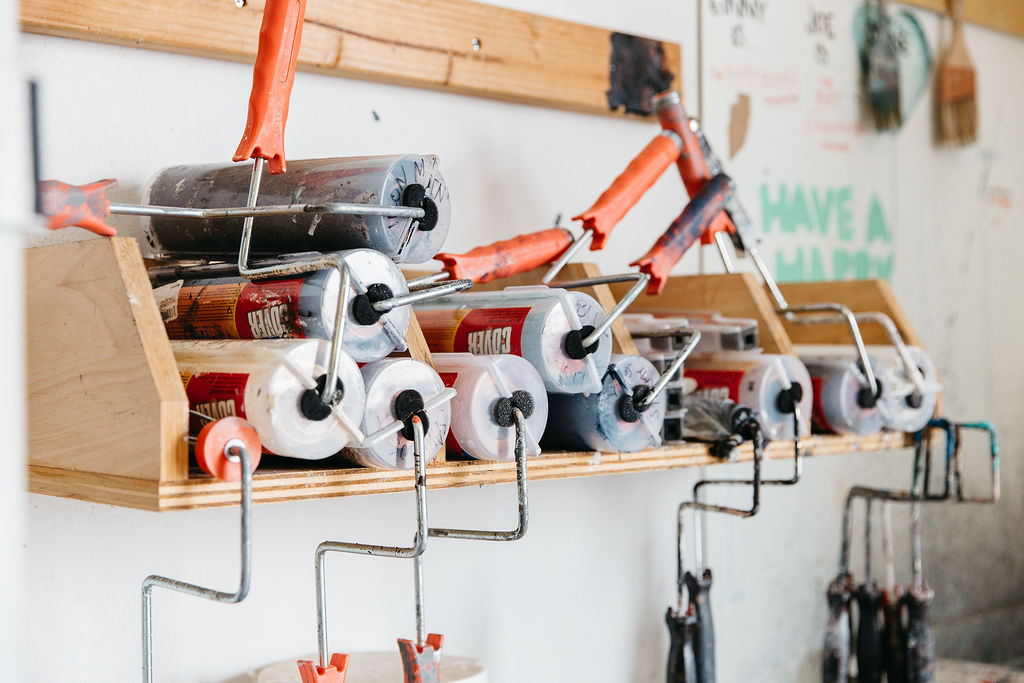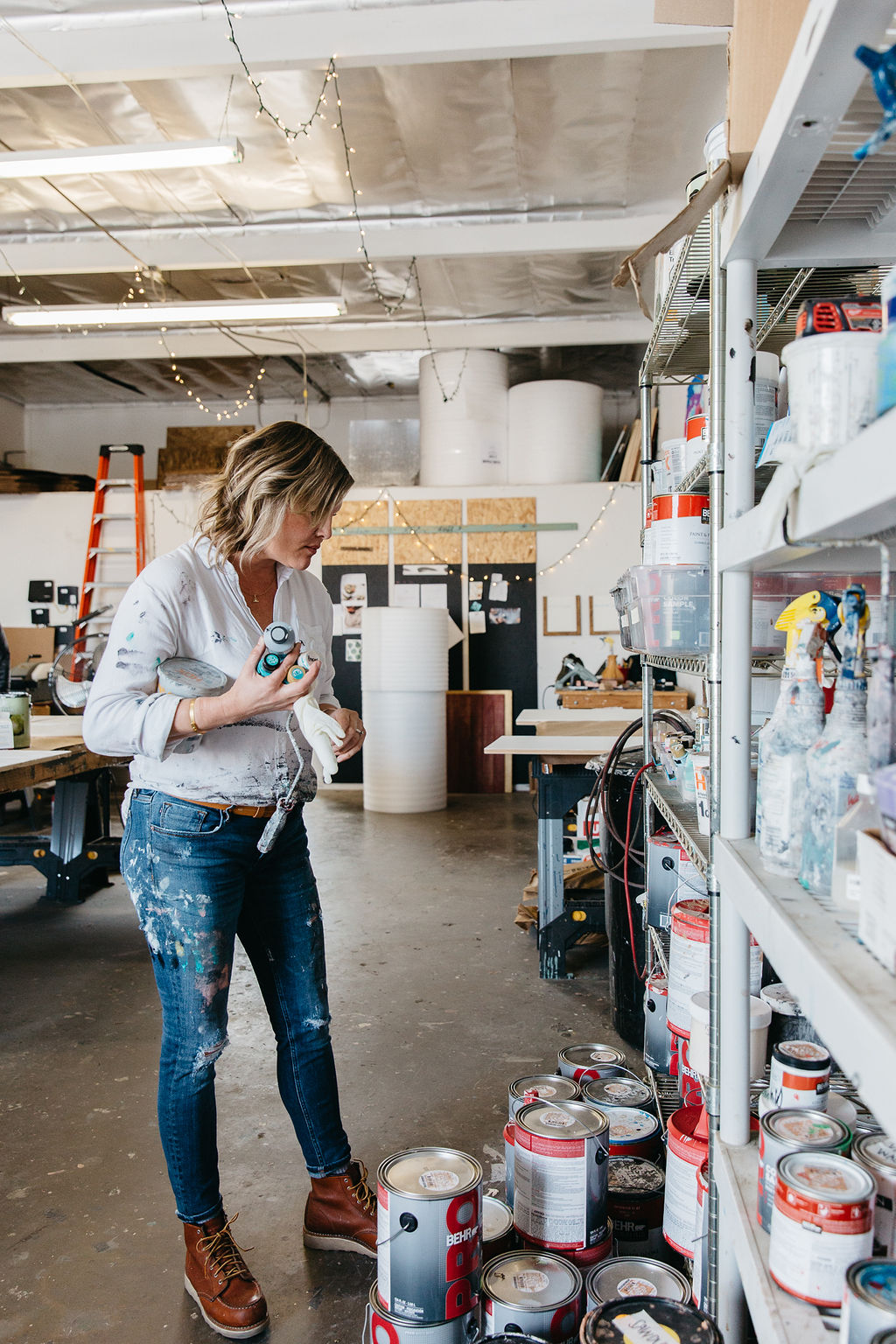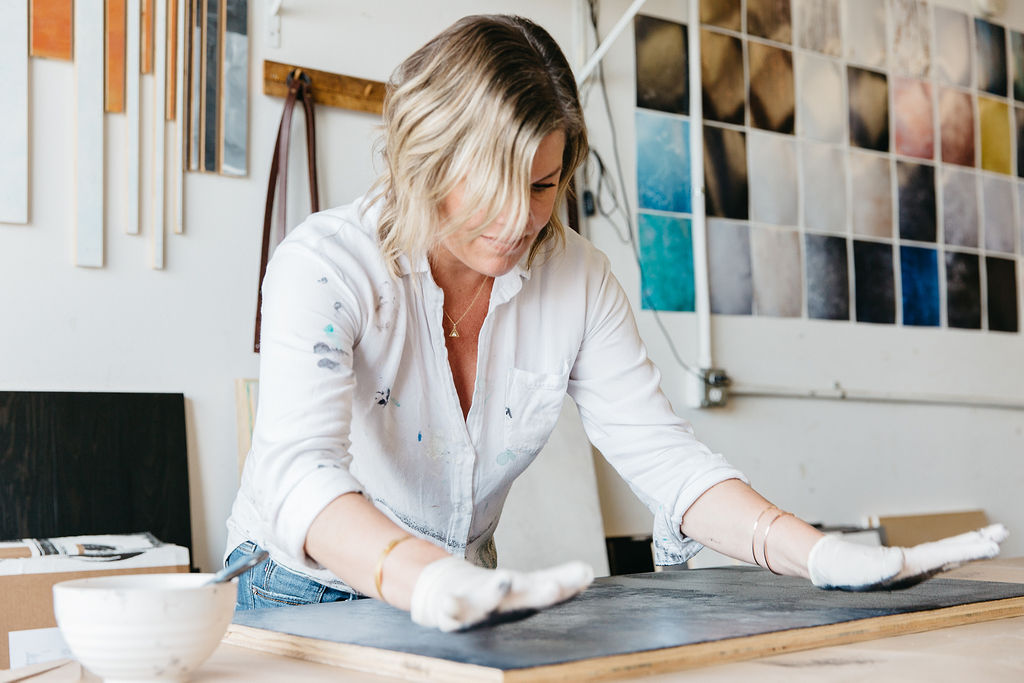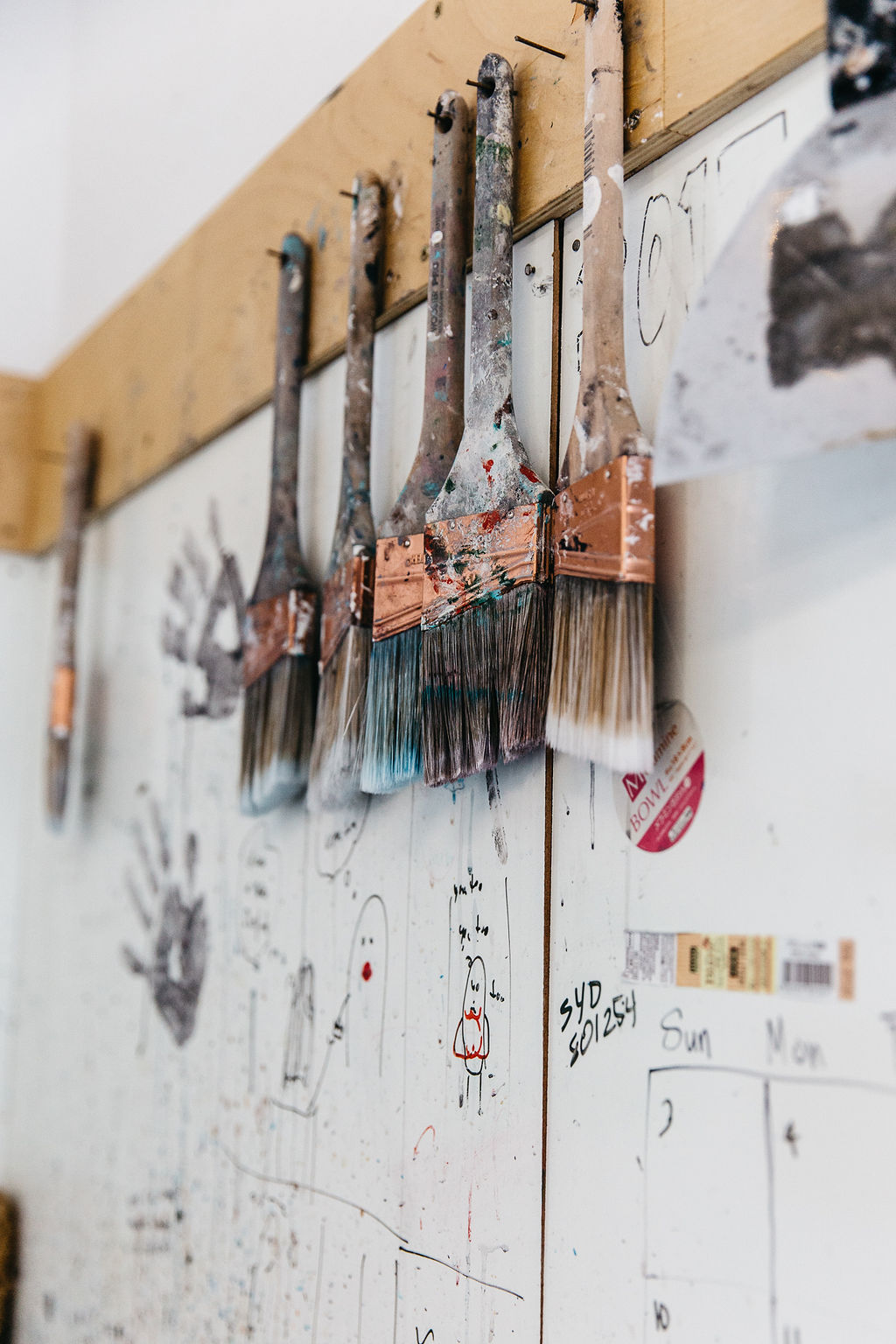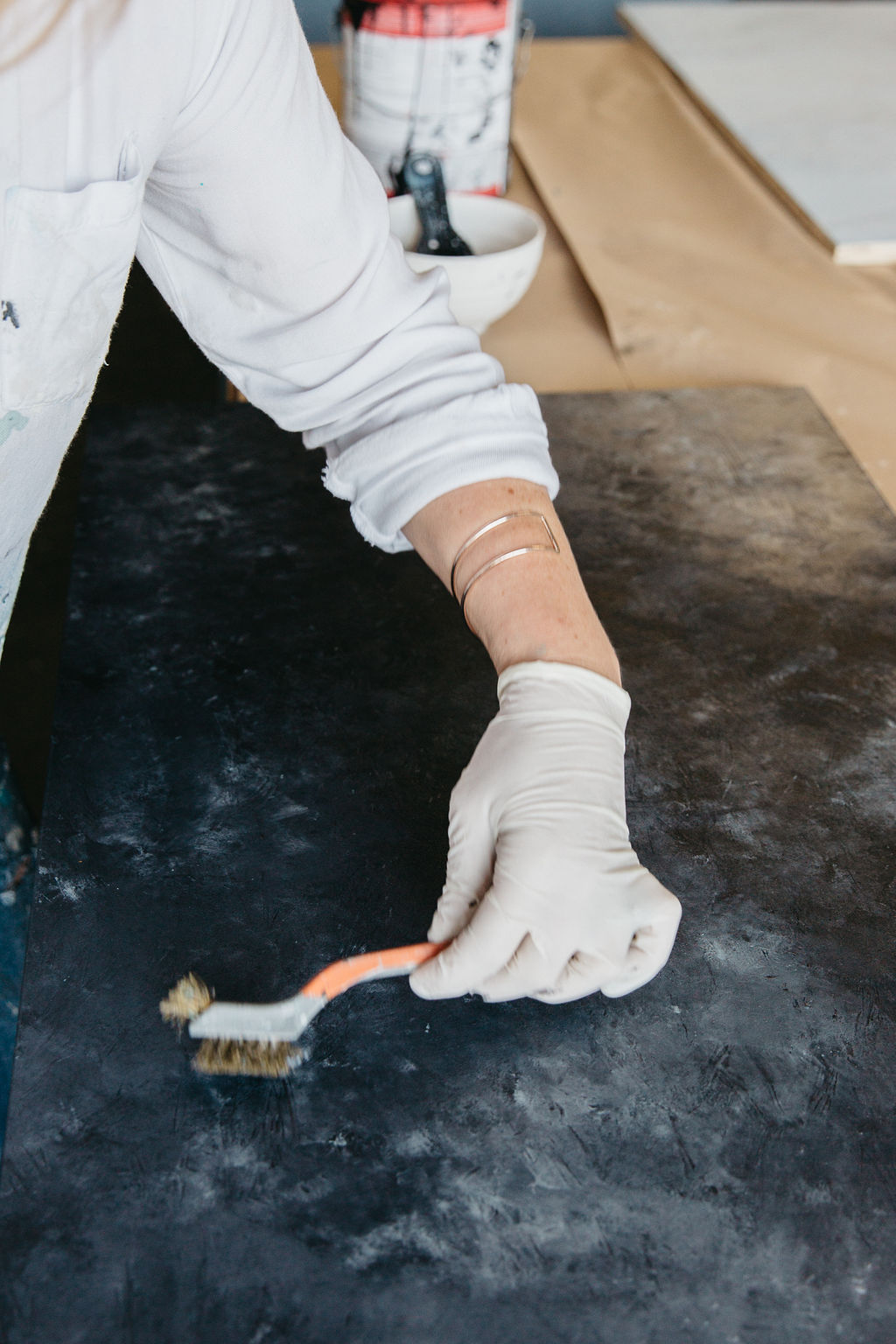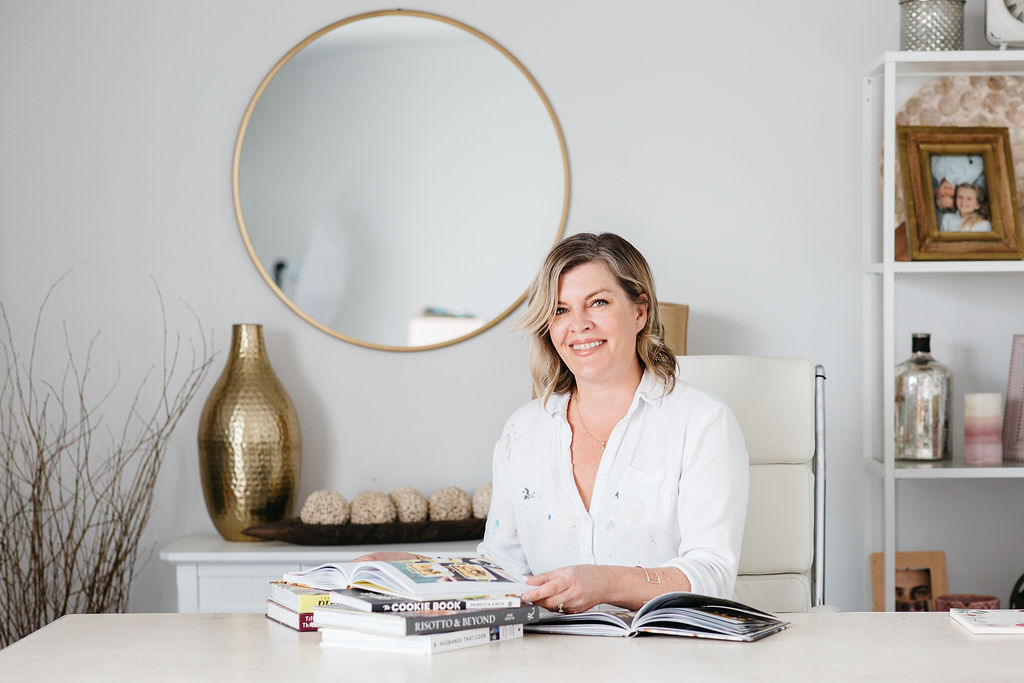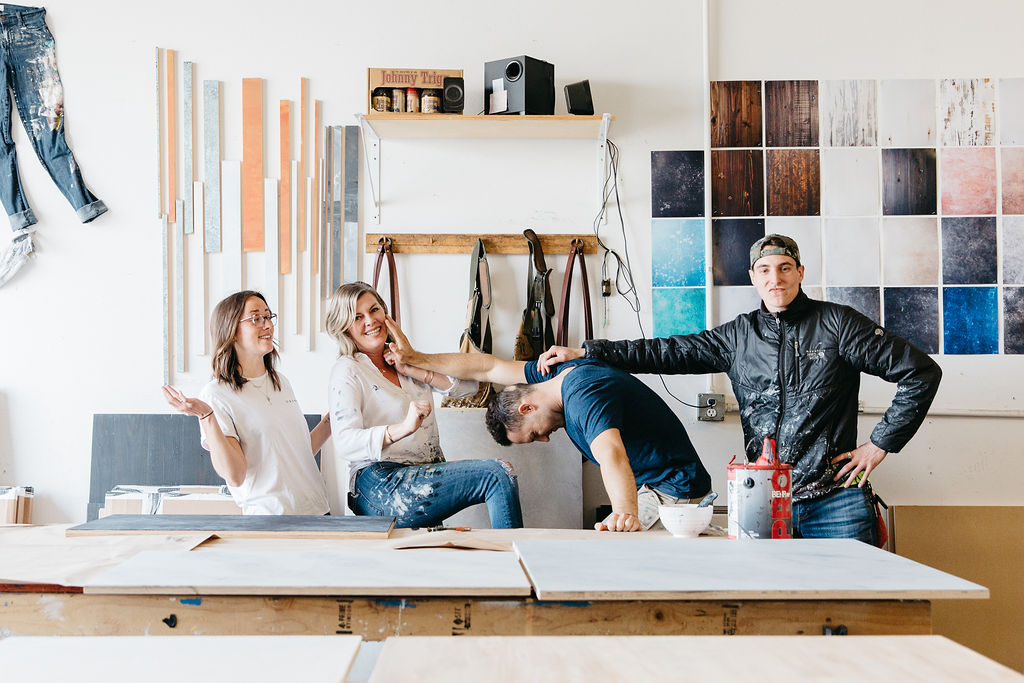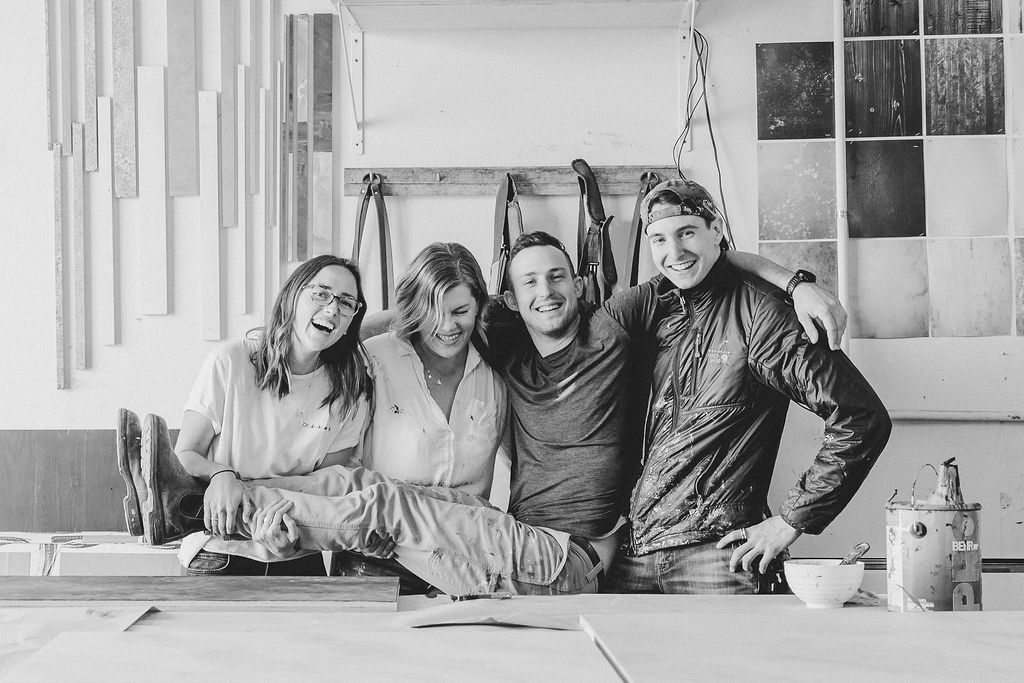You know those cookbooks with really pretty pictures of food? Yup, all those images are meticulously styled to make you want to cook and try that food. You probably know that there’s a photographer taking the picture and a stylist or art director placing the food/props in just the right place. You may not notice it, but there’s another key element that makes the photo look as amazing as it does - the surface. And chances are, a lot of the food photography you see use portable surfaces created specifically for food or product photography. Ginny, of Erickson Surfaces, hand-creates these photo surfaces that have been featured in dozens of cookbooks and hundreds of blogs.
Discovering Your Passion
I doodled or did crafts on Pinterest every now and then, but art was never an active part of my life. I didn’t define myself as an artist. My husband was (and still is) a school counselor, but he built headboards in the garage and listed them on Etsy. When he was making these at 10 pm, I told myself, “I can either sit here complaining that I’m by myself or I can go out in the garage and we can be together.” So I started helping him and then found different techniques of painting the headboards.
A portrait photographer found it and requested a 6 ft by 6 ft double sided platform for her studio. We thought, ‘Hey, maybe other photographers might be interested in something like this.’ So we listed those boards as well. Then a food blogger found us and asked, “Can you make it smaller?” She came in and designed a couple of first pieces and I started thinking, “Hey, maybe there’s a need for this.”
I had just been laid off from a real estate job I had for 12 years. I had been a Stay at Home Mom, but my kids were about to start school, so I was wondering if I should get a “real job.” My husband said, “Just sell 10 boards a month and we’re good.” That month I sold 20. I was elated. “This is what I’m meant to do! I love this!” I sent about 50 emails to bloggers. This was back in 2013, so people like Pioneer Woman and Joy the Baker. Joy the Baker got back to me and I started screaming and crying. My husband said, “I don’t think you were that excited when I proposed.” I’m like, “It’s JOY THE BAKER!”
When we started this business, you didn’t really see anybody doing this. And throughout my marriage my husband told me that he wished I found something I really enjoyed doing. I never really found something I loved doing until I found this. It was so exciting. We got kicked out of our condo because people were complaining about the noise coming from our garage from all the woodwork, so we lugged everything to my sister’s house. Then, our friends encouraged us to get a space. “This is happening. This is good.” They said, “But you need a space.” In 2014, we got our first space and in 2015, we got this current space.
Stifling or Inspiring Creativity?
It’s easy to fall into the “Oh, I’m not good enough” mode. That’s what stifles creativity.
I spent so much of my time last year kicking myself saying, “I’m not good at this and that with the business. I suck at this part. I’m not like so and so.” One morning I got up and thought, “Why am I kicking myself? These things I’m not good at, I can just hire somebody to do those things. The things I’m good at are really good, so embrace the parts I’m good at and get help with the things I don’t like doing because I cannot be good at everything. So now we have an awesome team and I get to work with some really great people. At the end of the day, I want to invest in relationships and care about the relationships I get to form through this work.
When you get to create beautiful work, you inspire others. I love that we get to make art that helps other people make art. Our mission statement is: “We exist to equip artists to craft beautiful stories.”
Once I create a surface, I can’t imagine what will go on it. I just like the way the surface looks. But some people will see a surface and instantly start imagining so many ways they can use it. I have a client who’s become a friend who instantly dreams up things you can do with the surface. One time, I made a custom board. She had a shoot with a chef the next day. At first, they weren’t thrilled with the photos, so she brought out the surface I made from her car, and it changed mood the entire shoot. They came out of that shoot with images they loved. I love that the work we create can do that for artists and businesses.
